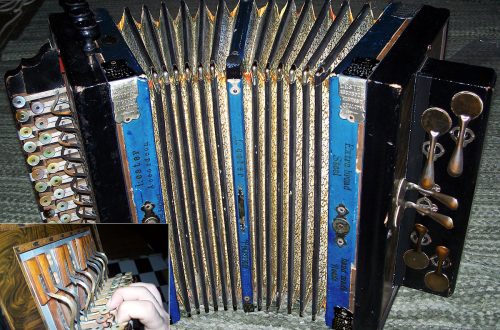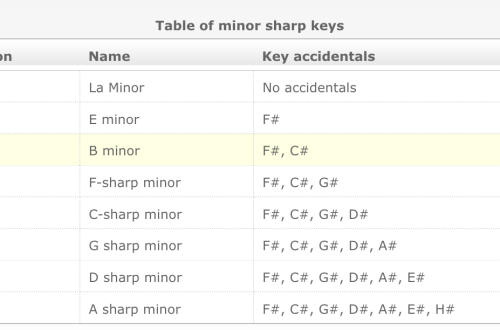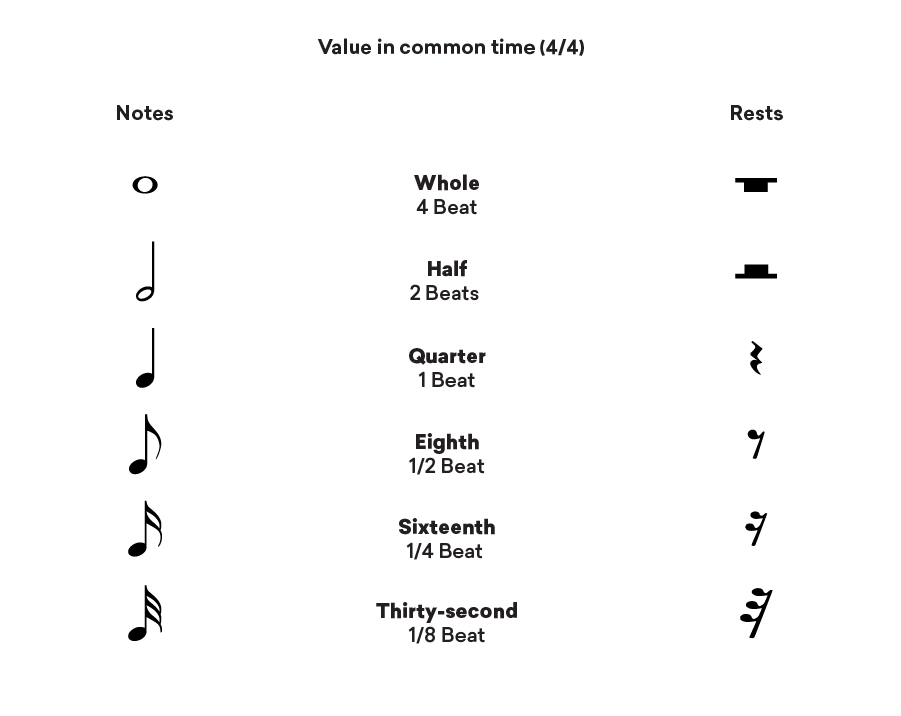
Types of rhythm in music
Rhythm in a piece of music is a continuous alternation of sounds and pauses of very different durations. There are a lot of variants of rhythmic patterns that could be formed in such a movement. And so the rhythm in music is also different. On this page we will consider only some of the special rhythmic figures.
1. Movement in even durations
Movement in even, equal durations is not uncommon in music. And most often this is a movement of eighths, sixteenths or triplets. It should be noted that such rhythmic monotony often creates a hypnotic effect – the music makes you completely immerse yourself in the mood or state conveyed by the composer.
Example No. 1 “Listening to Beethoven.” A striking example that confirms the above is the famous “Moonlight Sonata” by Beethoven. Look at the musical excerpt. Its first movement is entirely based on the continuous movement of eighth-triplets. Listen to this movement. The music is simply mesmerizing and, indeed, seems to hypnotize. Maybe that’s why millions of people on Earth love her so much?
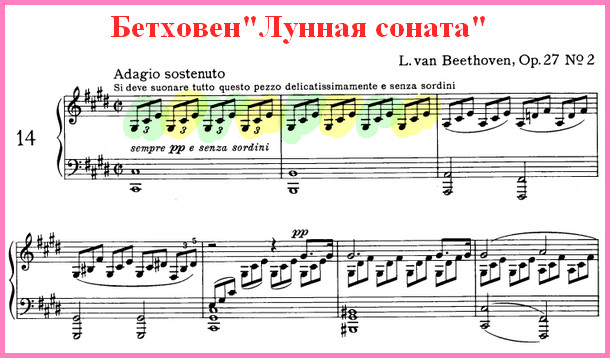
Another example from the music of the same composer is the Scherzo, the second movement of the celebrated Ninth Symphony, where, after a brief energetic thunderous introduction, we hear a “rain” of even quarter notes at a very fast tempo and in tripartite time.
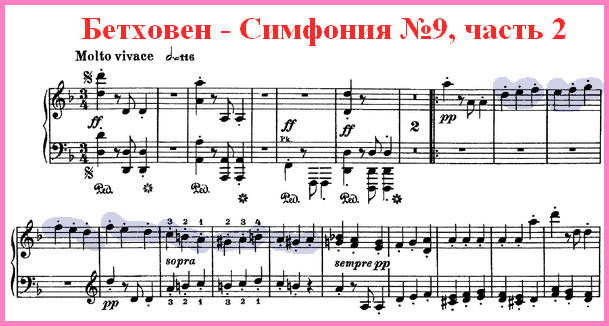
Example No. 2 “Bach Preludes”. Not only in Beethoven’s music is there a technique of even rhythmic movement. Similar examples are presented, for example, in the music of Bach, in many of his preludes from the Well-Tempered Clavier.
As an illustration, let’s present to you the Prelude in C major from the first volume of the CTC, where the rhythmic development is built on an even unhurried alternation of sixteenth notes.

Another illustrative case is the Prelude in D minor from the same first volume of the CTC. Two types of monorhythmic movement are combined here at once – clear eighths in the bass and sixteenth triplets according to the sounds of chords in the upper voices.
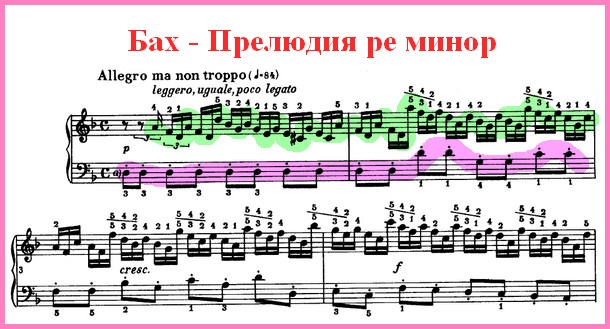
Example No. 3 “Modern music”. Rhythm with even durations is found in many classical composers, but composers of “modern” music have shown a special love for this type of movement. We now mean soundtracks for popular films, a number of song compositions. In their music, you can hear something like this:
2. Dotted rhythm
Translated from German, the word “point” means “point”. A dotted rhythm is a rhythm with a dot. As you know, the dot refers to the signs that increase the duration of the notes. That is, the dot lengthens the note next to which it stands, exactly by half. Often a dotted note is followed by another short note. And just behind the combination of a long note with a dot and a short one after it, the name dotted rhythm was fixed.
Let’s formulate a complete definition of the concept we are considering. So, a dotted rhythm is a rhythmic figure of a long note with a dot (on a strong time) and a short note following it (on a weak time). Moreover, as a rule, the ratio of long and short sounds is 3 to 1. For example: half with a dot and a quarter, a quarter with a dot and an eighth, an eighth with a dot and a sixteenth, etc.
But, it must be said that in music the second, that is, a short note, is most often a swing to the next long note. The sound is something like “ta-Dam, ta-Dam”, if expressed in syllables.
Example No. 4 “Bach again.” A dotted rhythm composed of small durations – eighths, sixteenths – usually sounds sharp, tense, increases the expression of music. As an example, we invite you to listen to the beginning of Bach’s Prelude in G Minor from the second volume of the CTC, which is completely permeated with sharp dotted rhythms, of which there are several types.

Example No. 5 “Soft dotted line”. Dotted lines don’t always sound sharp. In those cases when the dotted rhythm is formed by more or less large durations, its sharpness softens and the sound turns out to be soft. So, for example, in the Waltz from Tchaikovsky’s “Children’s Album”. The punctured note falls on the syncopation after a pause, which makes the overall movement even smoother, stretched.
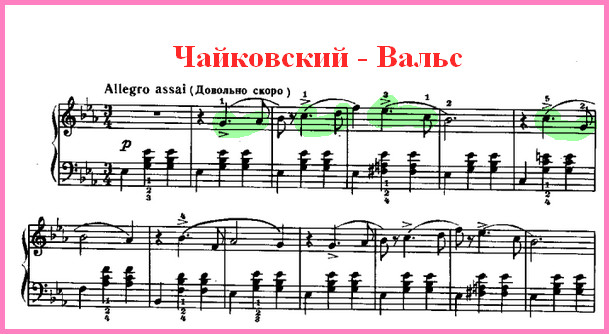
3. Lombard rhythm
Lombard rhythm is the same as the dotted rhythm, only in reverse, that is, inverted. In the figure of the Lombard rhythm, the short note is placed at strong time, and the dotted note is at weak time. It sounds very sharp if it is composed in small durations (it is also a kind of syncopation). However, the sharpness of this rhythmic figure is not heavy, not dramatic, not threatening, like a dotted line. Often, on the contrary, it is found in light, graceful music. There, these rhythms sparkle like sparks.
Example No. 6 “Lombard rhythm in Haydn’s sonata.” Lombard rhythm is found in the music of composers from different eras and countries. And as an example, we offer you a fragment of Haydn’s piano sonata, where the named type of rhythm sounds for a long time.

4. Tact
Zatakt is the beginning of music from a weak beat, another common type of rhythm. In order to understand this, one must first remember that musical time is based on the principle of regular alternation of beats of strong and weak fractions of a meter. The downbeat is always the beginning of a new measure. But music does not always begin with a strong beat, very often, especially in the melodies of songs, we meet the beginning with a weak beat.
Example No. 7 “New Year’s song.” The text of the famous New Year’s song “A Christmas tree was born in the forest” begins with the unstressed syllable “In le”, respectively, the unstressed syllable in the melody should fall on a weak time, and the stressed syllable “su” – on a strong one. So it turns out that the song begins even before the onset of the strong beat, that is, the syllable “In le” remains behind the measure (before the beginning of the first measure, before the first strong beat).
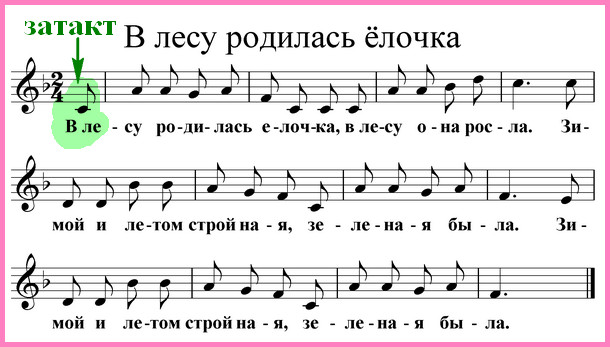
Example No. 8 “National Anthem”. Another typical example is the modern Russian anthem “Russia – Our Sacred Power” in the text also begins with an unstressed syllable, and in the melody – with an off-beat. By the way, in the music of the anthem, the figure of the dotted rhythm already familiar to you is repeated many times, which adds solemnity to the music.
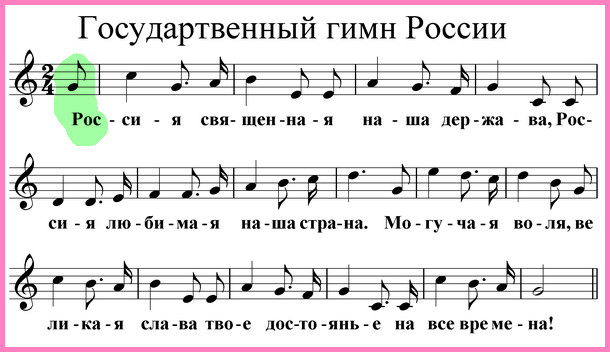
It is important to know that the lead-in is not an independent full-fledged measure, the time for its music is borrowed (taken) from the very last measure of the work, which, accordingly, remains incomplete. But together, in the sum, the beginning beat and the last beat form one full normal beat.
5. Syncope
Syncopation is the shift of stress from a strong beat to a weak beat., syncopations usually cause the appearance of long sounds after a weak time after a short or pause on a strong one, and are recognized by the same sign. You can read more about syncope in a separate article.
READ ABOUT SYNCOPES HERE
Of course, there are many more varieties of rhythmic patterns than we have considered here. Many musical genres and styles have their own rhythmic features. For example, from this point of view, such genres as waltz (triple meter and smoothness or figures of “circling” in rhythm), mazurka (triple meter and obligatory crushing of the first beat), march (two-beat meter, clarity of rhythm, abundance of dotted lines) receive vivid characteristics from this point of view. etc. But all these are the topics of separate further conversations, so visit our site more often and you will definitely learn a lot more new and useful things about the world of music.





